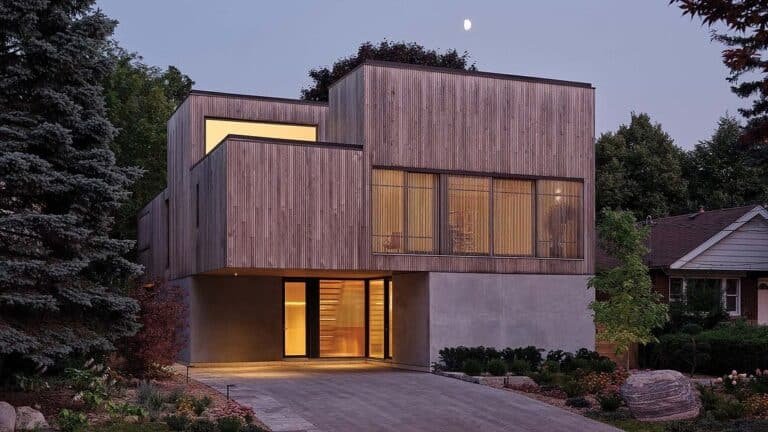Boulder’s Fire Station No. 3: A Sustainable Marvel Blending Innovation, Reuse, and Community Resilience
Nestled within Boulder’s 100-year floodplain and the rapidly growing Colorado Front Range, the new Fire Station No. 3 stands as a testament to architectural ingenuity, environmental stewardship, and pragmatic design. Replacing an outdated facility, this 28,300-square-foot station by Denver-based Davis Partnership Architects merges spatial clarity, expressive tectonics, and cutting-edge sustainability including a pioneering use of salvaged structural steel.
Modular Design for Future Replication
The station’s design is intentionally replicable, anticipating Boulder’s future needs. Its most striking feature is a bold, overscaled roof plane that unifies disparate programmatic blocks. A dynamic interplay of solids and voids creates a legible composition:
- North Block: A brick-clad volume houses the apparatus bay, where fire trucks stand ready to deploy through glazed overhead doors.
- South Block: A metal-paneled volume contains administrative offices (optional in future iterations).
- L-Shaped Support Block: Clad in dark-gray iron, this area includes a community room, fitness facility, and spaces for testing/maintaining firefighting equipment.
The second floor, designed for multi-day crew shifts, features living quarters opening onto a 6,000-square-foot green roof a respite for first responders. Glulam columns support the roof’s deep overhangs, blending functionality with aesthetic warmth.

Sustainability: Net-Zero Ambitions and Energy Innovation
While the station didn’t achieve full net-zero energy, it’s a trailblazer in carbon reduction:
- Photovoltaic System: A 207 kW solar array powers ~65% of annual electrical needs, aided by Boulder’s 300 sunny days.
- Low EUI (56.2): Half the typical energy use of public safety facilities, thanks to hyper-insulated walls/LED lighting/occupancy sensors/VAV heat pumps.
- Snow Mitigation: The roof’s overhangs and municipal snowplowing eliminated the need for energy-intensive pavement heating.

Salvaged Steel: A Bold Circular Economy Experiment
The project’s most radical innovation? Reusing 25+ tons of structural steel from a decommissioned city-owned hospital. This required:
- Precision Deconstruction: KL&A Engineers cataloged each piece (photos, dimensions, bolt-hole patterns).
- Adaptive Design: Architects reconfigured irregular beams for visual consistency in the apparatus bay.
- Carbon Savings: 89 salvaged members (32% of the original stock) reduced embodied carbon by 25,000 kg doubling the steel’s lifespan.
Though cost savings were minimal (~$6,000), the environmental and symbolic value was profound. As project architect Josh Perrin notes, “We maximized reuse while creating spatial order a complex puzzle.”

Credits & Specifications
- Architect: Davis Partnership Architects
- Structural Engineer: KL&A Engineers
- Cost: $23 million | Completion: September 2024
- Materials: Salvaged steel, glulam, brick, metal panels

Editorial Insight
Boulder’s Fire Station No. 3 exemplifies how public infrastructure can harmonize operational efficiency, community needs, and planetary responsibility. Its modularity and energy-smart systems set a benchmark, though the reliance on future renewable energy purchases to achieve net-zero carbon reveals gaps in on-site solutions. The salvaged steel initiative is laudable but underscores the need for broader industry adoption of circular practices to offset labor-intensive processes. Ultimately, this project shines as a prototype—proving that even functional spaces like fire stations can embody bold environmental leadership while serving those who protect us.
Explore More with ArchUp
ArchUp documents the evolving profession of architects worldwide, from career insights and research to project profilesand industry news. Our editorial team publishes global salary trends, career advice, and opportunities for emerging talents. Learn more on our About page or Contact us to collaborate.







